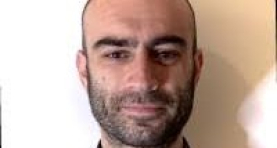
David Acunzo is a neuroscientist based at the University of Virginia, whose research encompasses topics relevant to parapsychology.
Career
David J Acunzo is an assistant professor in the Division of Perceptual Studies (DOPS) at the University of Virginia School of Medicine. Having gained a telecommunications engineering degree from IMT Atlantique (France), Acunzo earned his PhD in neuroinformatics from the University of Edinburgh. He then took up research positions at the University of Trento’s Center for Brain/Mind Sciences and the University of Birmingham’s Centre for Human Brain Health.
Acunzo’s research applies advanced neuroimaging techniques to explore cognitive processes in vision and attentional processing. His work at DOPS bridges mainstream neuroscience and parapsychology, focusing on abnormal perceptions, hypnotic suggestion, and extraordinary experiences including mystical and psi phenomena.
Persistence of ESP Ability
Acunzo and colleagues carried out an ESP study with Bill Delmore, a 74-year-old who had been the subject of high-scoring experiments as a student. Using EEG recording techniques, they employed a computerized target location task where Delmore attempted to identify a dot’s position within an ellipse. At the same time a second person, termed ‘agent’, was viewing the target location on a screen in a separate distant room, although in half of the trials the screen was blank. Delmore was clearly successful in the condition when the agent could see the target location on the screen (p = 0.0075) but not when the agent’s screen was blank, when the results were at chance level. The overall results were significant at p = 0.04.1
Neuroimaging in Psi Research
With Thomas Rabeyron and Renaud Evrard, Acunzo reviewed the neuroimaging psi data. They considered six functional neuroimaging studies of distant intentionality/telepathy, where a remotely-located individual attempts to send information to, or simply focus on, a receiver, also a brain imaging precognition study. They found the overall evidential base to be quite high (one negative study) but marred by poor methodology. Accordingly, they proposed improvements in experimental rigour: counter-balancing of trials, improved randomization techniques, adequate shielding between receiver and external environment, and ensuring sufficient power by recruiting enough subjects.
Out of Body Experiences (OBE)
A major part of Acunzo’s research program is dedicated to exploring the out of body experience, its phenomenology in general and veridical aspect in particular (gaining accurate knowledge while ‘out of the body’) within a laboratory environment.
In a 2024 publication, Acunzo and coauthors explore how out-of-body experiences potentially enhance empathy and prosocial behaviour. They propose that OBEs foster empathy through ego dissolution, creating a profound sense of interconnectedness with others. This mechanism parallels the effects observed with certain psychedelic substances. The temporoparietal junction and default mode network are identified as potential neural correlates underlying this relationship.2
Acunzo and Weiler critically evaluate what OBEs may reveal about the mind-brain relationship in four frameworks: as hallucinations produced by neural processes, as evidence for non-local consciousness, or of consciousness functioning independently of the brain, or of consciousness surviving brain death. Their comprehensive analysis covers neurobiological explanations, experimental studies testing non-local perception during OBEs, and striking case reports involving blind individuals and clinical settings during compromised brain function. In particular, they find a lack of neurobiological explanations able to account for verified reports of accurate perceptions during OBEs.3
In a 2025 publication Acunzo and colleagues investigated a novel methodology for studying OBEs. Working with three participants trained to self-induce the condition, they tested the idea that voluntary horizontal eye movements might serve as time markers for its onset. This approach adapts a technique previously used in lucid dream research. One participant consistently succeeded by performing the instructed right-left-right-left eye movement pattern at the onset of disembodiment, as was confirmed by electrooculography (EOG) recordings. The authors identified environmental factors critical for facilitating OBEs, including quiet, dim lighting, and minimal clutter.4
Michael Duggan
Literature
Acunzo, D.J., Evrard, R., & Rabeyron, T. (2013). Anomalous experiences, psi and functional neuroimaging. Frontiers in Human Neuroscience 7, 893.
Acunzo, D.J., Lenz, J.E., Dunseath, R., Hanchak, E., Kelly, E.F. (2024). The return of a high performing psi participant: Behavioural results of an ESP task with EEG. Abstracts of Presented Papers of the 66th Convention of the Parapsychological Convention. Merida, Mexico. August 22-25.
Weiler, M., & Acunzo, D. J. (2024). What out-of-body experiences may tell us about the mind beyond the brain. International Review of Psychiatry.
Weiler, M., Acunzo, D.J., Cozzolino, P.J., Greyson, B. (2024). Exploring the transformative potential of out-of-body experiences: A pathway to enhanced empathy. Neuroscience and Biobehavioral Reviews 163, 105764.
Weiler, M., Casseb, R.F., & Acunzo, D.J. (2025). Using eye movements to signal the onset of self-induced out-of-body experiences (OBEs). Journal of Consciousness Studies 32/3-4, 135-49.

